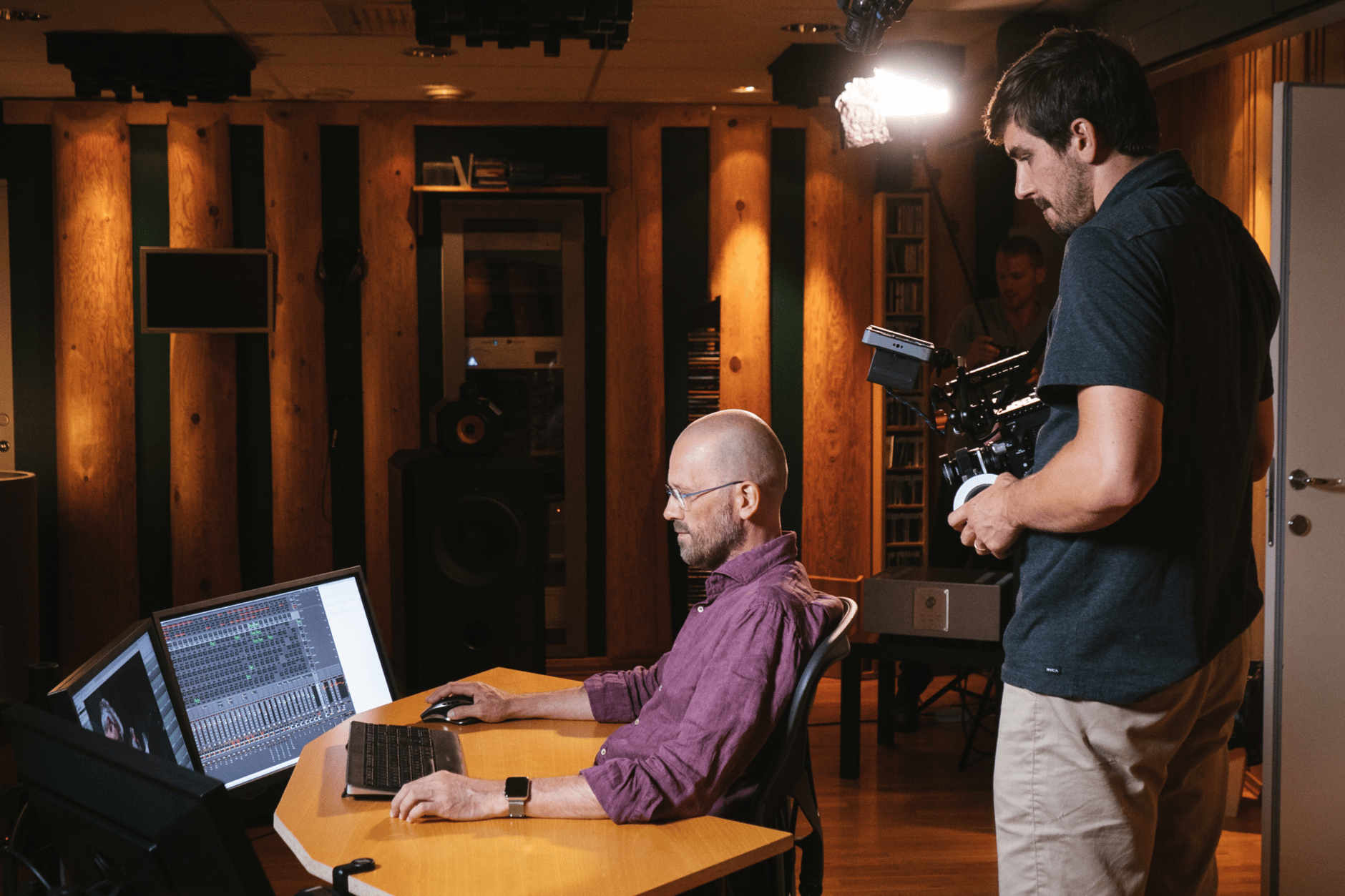Morten Lindberg - Recording Engineer & Music Producer


Sennheiser’s Pro Talk Series on YouTube features interviews with the industry’s most respected audio professionals, including recording engineer and music producer Morten Lindberg, photographer, scuba diver and world-record holder for the most Grammy nominations without a win (34 to be exact).

Like many of the greats in the industry, Lindberg’s background in audio began at a young age – through his interest in both electronics and music.
In addition to his time spent at home tinkering with alarms and power circuits, Lindberg also worked alongside a local musician, who really fueled his love for audio engineering. “He showed me two microphones and an open-reel recorder and, from that moment, I was sold,” says Lindberg.
This mentor also taught Lindberg to play and appreciate traditional and classical music. “When I studied engineering, I was the only one in our class who actually read a score,” he says. “Our music teacher was looking for an audio engineer and everyone else in class was looking for a job working the big pop hits, but I was into classical. So, I got that job. It was for the Edvard Grieg Jubilee, one full album every two weeks all through the year. By the end, I had [recorded] almost 30 albums.”

Lindberg specializes in immersive audio recording and production for classical, acoustic jazz and folk music. When he first began producing in the early nineties, there was an abundance of work available for traditional styles of music. But, as budgets tightened, labels scaled back. This ultimately led to Lindberg establishing his own company and techniques in the early part of the century. His signature immersive style is perfected through his recording technique.
“We do all our recordings out in live venues, then we bring that material back through our mixing and mastering studio,” he explains. “I find myself very inspired by the recording era of the 50s. I really, really find enjoyment in those recordings, so I tend to aim for an updated, modernized version of that approach.”

Lindberg has made quite a name for himself through this technique. “I was introduced to immersive audio not as a living breathing example, but as a concept,” he explains. “I was intrigued, so I said ‘okay, let's do this.’ I expected more resolution and detail. But that didn't happen, and that was quite surprising. Instead, there was an emotional impact that just exploded. After producing music in an immersive manner, there is no way to go back.”
“I think maybe what makes my style of recording special is that at some point we gave up on the realistic documentation of what goes on in a concert hall and pursued the illusion,” continues Lindberg. “Instead of reproducing what an audience hears in a concert hall, we try to find the perspective that really can't be bought in a traditional surrounding. We search for ‘okay, what is the conductor experiencing? Is there any other perspective that can actually convey the emotional intent of the music?’ Rather than looking at the performance, we start with the score and the music.”

For Lindberg, this means examining all details to find exactly what to reproduce, and how, and then pinching them together into a simplified focus. This simplicity, he says, should translate from reading the score all the way to finding musician placement. “On the technical side, choosing microphones is as simple as keeping your signal path clean and short, with as few components as possible,” he explains. “Don’t just spread as many microphones as possible for someone else to pull the faders in post-production. Make the choice so you have a result that will actually be the fundamentals of your next choice.”
In addition to microphones, Lindberg credits headphones as being an important piece of his recording and production style. “I've used Sennheiser headphones ever since I started out in audio,” he says. “In the early days, it was the 500 series, then the series and, at some point, Sennheiser brought me the . Now, I can't use anything but the . I'm addicted. I have no clue what I would ever do if all the in the world were destroyed. I would start all over.”
According to Lindberg, headphones give him exactly the kind of information he needs, which is what the microphone is picking up at its current position. “You can do pretty much anything and have full control on headphones,” he adds. “I emphasize this because traditional professors say ‘you can't record or mix on headphones.’ Yes, you can, but you need to relate it to a speaker environment. Build a sense of transfer of functionality, which makes you secure on headphones. You also must have a very good mastering studio so you can make the final production sound like it did while recording on headphones.”
With this approach, Lindberg is able to lay out all the audio and practically let the listener choose what to hear. “I think one aspect of quality production is to step back and just relax and actually allow yourself time to experience what is really happening,” he says. “Only then can you make the right choices on how to move forward. Stop, listen to what's happening around you, reflect and then act.”
Lindberg says one piece of advice he’d give to up and coming engineers is “to follow your own consciousness because if you spend your working career chasing after satisfying everyone else, then you’re going to make mediocre products for the rest of your life,” he adds. “Figure out what you want to do, think it through and then start working, start learning the tools. That's really, really important. I can't stress that enough.”